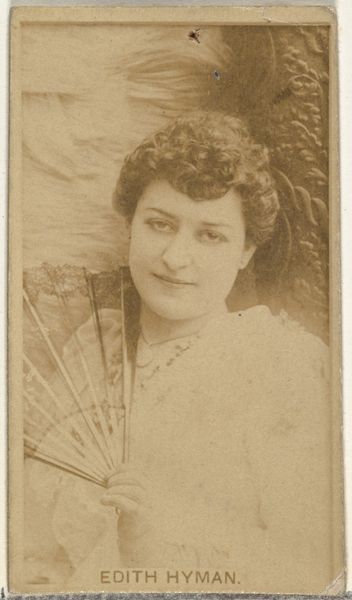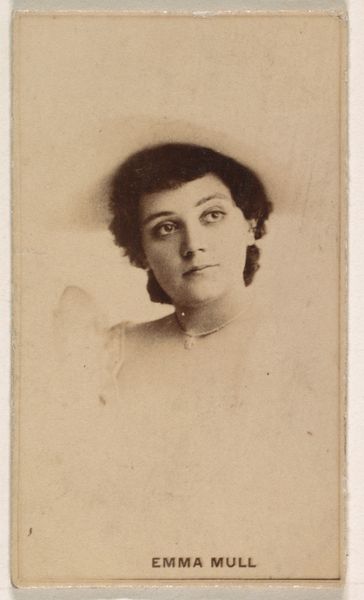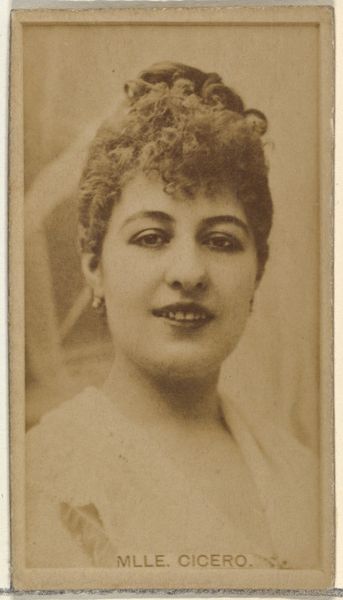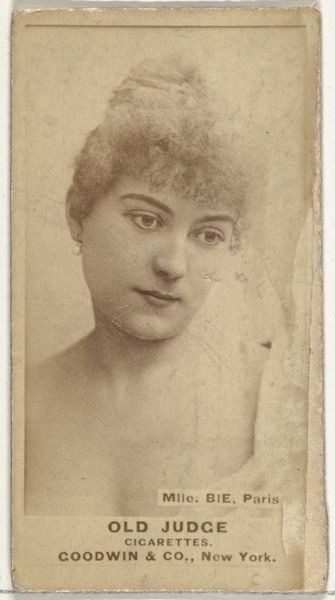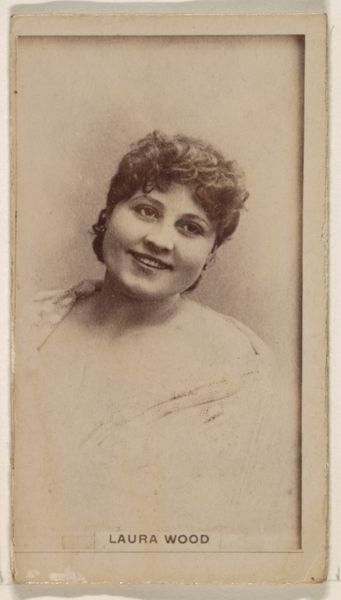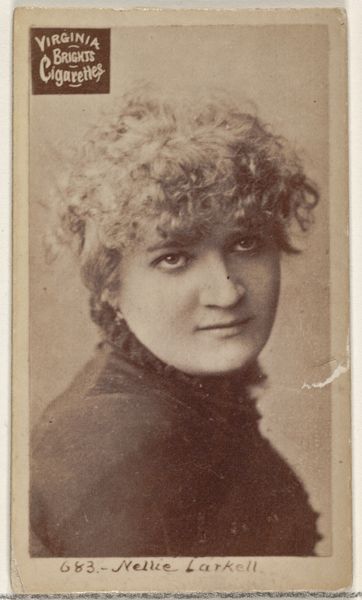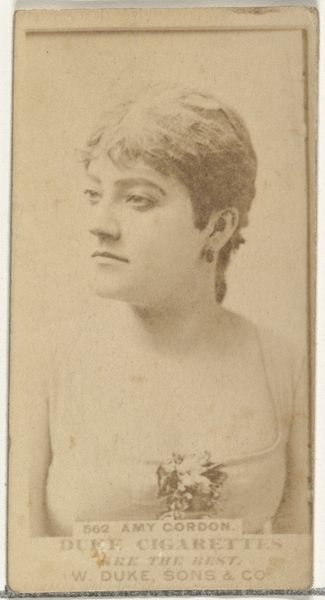
Dimensions: sheet (trimmed to image): 15.2 × 11 cm (6 × 4 5/16 in.) page size: 33.8 × 27 cm (13 5/16 × 10 5/8 in.)
Copyright: National Gallery of Art: CC0 1.0
Editor: Here we have "Marina," a photograph by Alfred Stieglitz, likely taken between 1887 and 1896. The sepia tone lends a timeless quality. There's a beautiful softness to it. What catches my attention most is the woman's gaze—it feels so direct and a little melancholy. How do you interpret this work? Curator: Her gaze is indeed compelling. Look closer – beyond the immediate emotional read, and consider what her image, her pose, positioned against that weathered wall, evoke culturally. Stieglitz, working within the Pictorialist movement, used photography to elevate the medium to the status of fine art, often imbuing his images with layers of symbolic meaning. Does the juxtaposition of the soft, human subject and the rigid brickwork spark any ideas for you? Editor: Maybe the wall represents something solid and unyielding, like societal expectations perhaps, against which her individuality is set? Curator: Precisely! Consider the era. What might a young woman, staring directly at the viewer like this, signify during the late 19th century? The forward gaze carries strength, and a potential challenge to prevailing social norms. Remember that photography, at the time, was still relatively new, thus portraits took on even more weight and consideration. It's not just a likeness, it’s a statement. Editor: That makes me see her expression in a completely new light. It's not just sadness, it's resilience too. Thank you! Curator: And what about that shawl wrapped tightly around her shoulders? How might it be read in this context? These layers become integral parts of the artwork’s symbolic language. We have peeled back a layer of time itself.
Comments
No comments
Be the first to comment and join the conversation on the ultimate creative platform.


